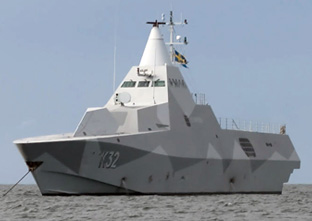Each conflict is a formidable test bench for assessing technological choices

What role does research on materials have, in the field of defence ?
The topic of advanced materials is currently central to military research. It is impossible to not take them into account when looking at the ways armies are shaped according to the various technologies. New developments in materials intended for use in armour plating, and protection systems in general, for instance, is a major concern for many military organisations.
From the point of view of defence, the introduction of new materials, the reclassification of others, such as plastics, are key in the renewal of existing weapons systems. The latter are still largely dominated by mainly metallic equipment designed at the end of the Cold War in the 80s, for symmetrical conflicts.

What has caused this questioning of the current generation of armour ?
 In short, it is due to what is called "the asymmetric threat"! This concept is the result of the experiences of Western armies in Iraq and Afghanistan, where armoured vehicles, including the most recent models, proved to be vulnerable to improvised explosive devices (IEDs).
In short, it is due to what is called "the asymmetric threat"! This concept is the result of the experiences of Western armies in Iraq and Afghanistan, where armoured vehicles, including the most recent models, proved to be vulnerable to improvised explosive devices (IEDs).
British and American armoured vehicles, designed for frontal assaults against similar vehicles on the Central European theatre of operations, revealed their limitations with regard to homemade mines. Worse yet, the excessive confidence in electronics and information technology in the 90s led to the development and use of more sophisticated vehicles, which were also lighter and therefore more vulnerable, which it was then necessary to equip with emergency stopgap measures such as over-armour and other protections. In both cases, the refusal to give up operational mobility led to exploring new materials to address these sensitive topics, and namely composite materials.
Are these new technological choices sustainable ?
 Without a doubt! Conflicts are a formidable test bench for assessing the technological choices of the military industries and the strategic concepts that they tend to favour. And to reorient them, where applicable.
Without a doubt! Conflicts are a formidable test bench for assessing the technological choices of the military industries and the strategic concepts that they tend to favour. And to reorient them, where applicable.
The European Defence Agency's approach is revealing in this respect, because it serves to highlight the priorities considered in a context of weak strategic integration at community level and of lowered military spending at national level.
However, in this context which is not conducive to dispersion, we find that a category A program, which is to say program open to all Member States, revolves around "innovative technologies and concepts" and research on advanced materials, namely composites and adaptive polymers, whether or not they are nanostructured.
What are this approach's consequences on the doctrines ?
The diversification of materials, their hybridisation for the purpose of developing versatile materials, inspires strategic new concepts which are also based on the versatility and the combination of forces.
For instance, the idea that future major conflicts will take place in coastal areas as part of coastal and amphibious operations leads to configuring future surface ships for the purpose, on the basis of new materials that combine resistance and stealth while guaranteeing a certain degree of autonomy.
With regard to polymers in particular, they will likely play a key role in future stealth-based strategic approaches. It is already the case in avionics.

 The military industry is currently conducting extensive research on polymers with the aim of developing new conventional missiles, which is to say non-nuclear, that are entirely stealthy or even invisible, with increased penetrative and destructive capabilities.
The military industry is currently conducting extensive research on polymers with the aim of developing new conventional missiles, which is to say non-nuclear, that are entirely stealthy or even invisible, with increased penetrative and destructive capabilities.
This sophistication has larger consequences than the development of drones which remain pieces of reconnaissance equipment which can be converted, where applicable, for specific and limited strikes against targets of opportunity. Certain analysts, including those in military institutions, believe that the near-perfect stealth of Western strike systems has its limitations. Not on the technological front, where the lead can be kept, but because it necessarily involves asymmetric retaliatory measures! In short, this technological supremacy is a formidable incentive for terrorist actions, the dissemination of dirty, chemical or radioactive bombs and other non-conventional weapons of destruction.
Are the arms industries focusing less on traditional conflicts between States as a result ?
Obviously not. However, the potential risks that may arise from the technological breakthroughs linked to the emergence of new strategic materials are of a different nature. Their development outside of the context of reciprocal control agreements implemented during and at the end of the Cold War removed the guarantees of a relative balance of conventional forces. Which encourages defiance, and therefore hostility between the major powers.
This new arms race, focused on stealth, is likely to fuel suspicion between policymakers and diplomats who would no longer share any strategic views.
This is why, for instance, with regard to the strategic issues related to the use of nanostructured materials in weapons systems, some experts believe that they must be included in the scope of the control agreements that are still in force. On the other hand, there are others who suggest that new frameworks for negotiations must be created.






